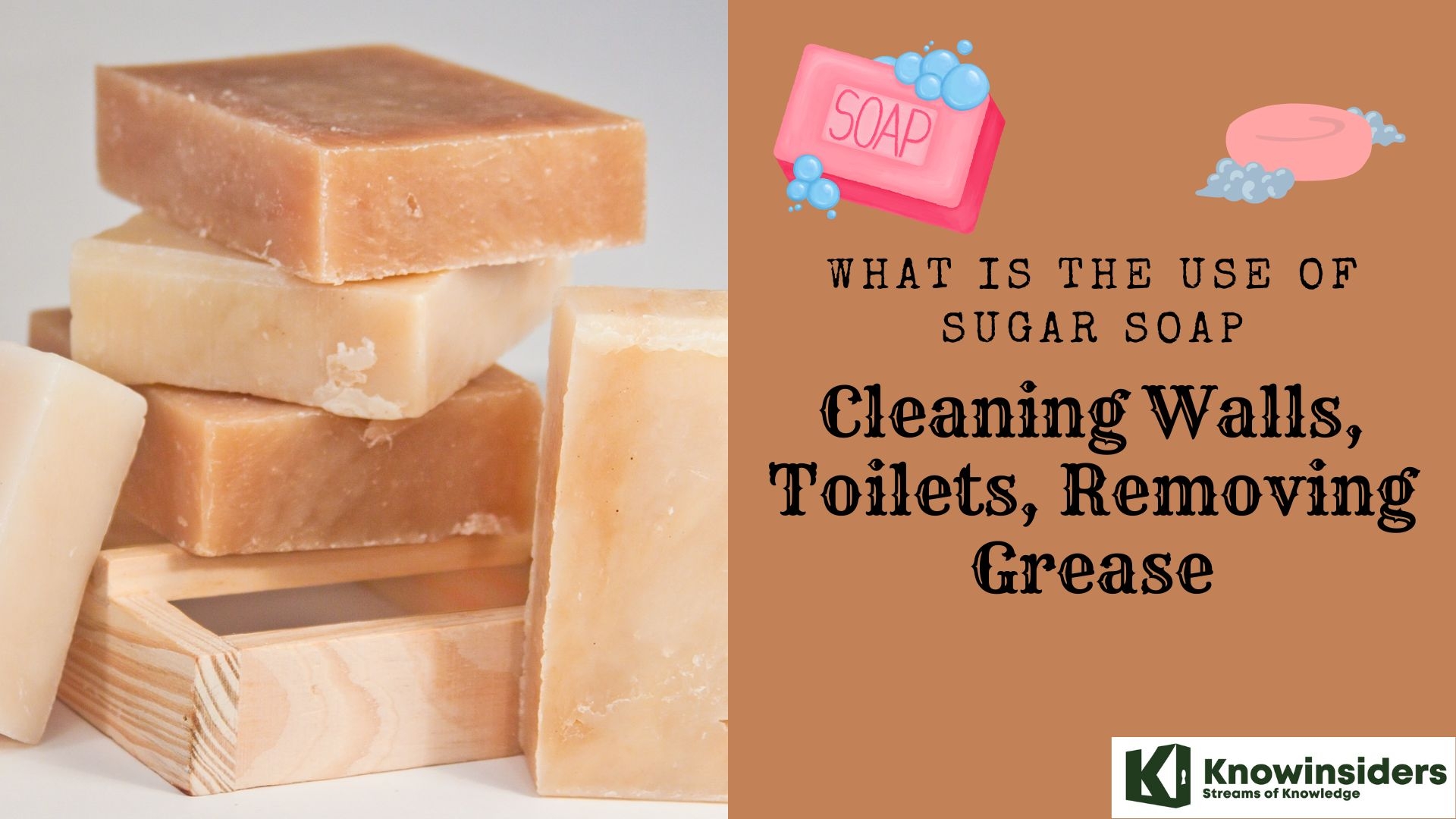How Many Ounces in A Cup of Water, Beer, Coffee, Rice and Flour?
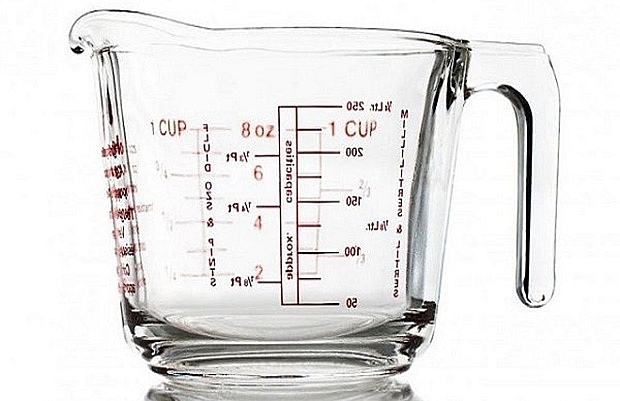 |
| How to convert cups to ounces |
While most people would quickly reply, “There are 8 ounces in a cup, of course!” that’s not always true. The true answer is, it depends what you’re measuring.
To complicate matters further, a cup is not always a cup, and an ounce isn’t always an ounce, depending on your country and where the recipe was written.
1. How Many Ounces in A Cup
2. How Many Ounces in A Cup of Water
3. How Many Ounces in A Cup of Coffee
4. How Many Ounces in A Cup of Rice
5. How Many Ounces in A Cup of Flour
6. How Many Ounces in A Cup of Beer
1. How Many Ounces in A Cup
In summary, if you have a recipe featuring measurements in cups then it's likely to be one of two things:
A US recipe (using the US customary cup)
An old (pre-1970s) UK recipe (using the imperial cup)
If it's a recipe from anywhere else in the world, or a more recent UK recipe, then it'll likely be referencing the international metric cup. And then there's the ounce, which comes as a dry ounce or fluid ounce. For this discussion, we'll focus on the fluid ounce. Should you wish to convert using the dry ounce then give our cups to ounces converter a try.
The fluid ounce has two different measurements - there's the US fluid ounce and the UK fluid ounce. It can get complicated, especially if you're using a US recipe and based in the UK, or vice-versa. But, fear not, for I will break it down for you. Let's look at the conversions of each:
US recipes - cups to ounces
1 US cup (236.59mL) = 8 US fluid ounces
1 US cup (236.59mL) = 8.327 UK fluid ounces
Old UK recipes - cups to ounces
1 UK cup (284.13mL) = 10 UK fluid ounces
1 UK cup (284.13mL) = 9.607 US fluid ounces
Rest of world recipes
1 international metric cup (250mL) = 8.454 US fluid ounces
1 international metric cup (250mL) = 8.799 UK fluid ounces
2. How Many Ounces in A Cup of Water
When we say “there are 8 ounces in a cup” we are talking about fluid, or liquid ounces. How many ounces in a cup of coffee or water? In this case, yes there are 8 fluid ounces in a cup.
With liquid, weight and volume are comparable. That’s easy. Things get tricky with dry measurements.
1 US cup of water (cup) = 8.35 ounces of water (oz wt.)
3. How Many Ounces in A Cup of Coffee
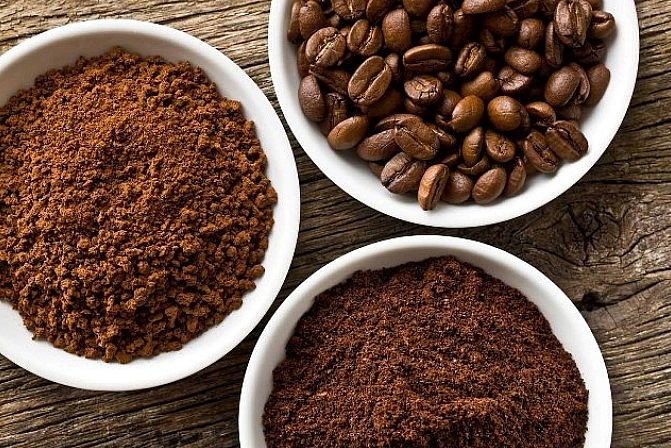 |
A "cup" of coffee in the US is usually 4 fluid ounces (118 mL), brewed using 5 fluid ounces (148 mL) of water.
In America, when you read about serving sizes, 8 oz. seems to be the standard when it comes to drinks. At first glance, that makes sense. After all, 8 oz. is a cup. Then you realize that 6 oz. is actually the standard for coffee.
What Gives?
Why are the sizing standards different? More importantly, how can you make a great cup of coffee while thinking in terms of six oz. vs. eight oz. Ultimately, you should be able to make the ideally portioned cuppa without having to rely on your elementary school math skills.
The American Cup Measurement
Take a look at a liquid measuring cup in America. If it has notations for cups and ounces, then eight oz. will equal one cup. The exception to this is the standard, hot, mug-served cup of coffee. That is six ounces. Interestingly enough, other mug-served beverages such as tea and cocoa are also measured as six oz. servings in many cases.
So, cold beverages in most cases are eight oz. Hot beverages served in mugs are often six oz. Is that all?
Actually, no. Because there are even exceptions in those cases. Coffee drinks including, espresso shots (one oz.!), double espresso (two oz.!), and Turkish coffees which are often served in a ½ cup demitasse.
Then there’s the fact that standard cup sizes are different throughout the world, and they’ve changed over time. You’ve also noticed that coffee mug sizes have gotten larger. Think about the coffee cups with your grandmother’s china set. Now, look at your ‘I Love my Cat’ coffee mug. Bet yours is significantly larger.
However, for now, just think about a standard cup of coffee. How do you keep the ratio of grounds to water straight if you are used to thinking in terms of eight oz.? What if you are brewing by the pot, not by the cup?
Fortunately, once you know a few best practices, you can figure things out fairly easily.
Adjusting Your Ratio
It would seem easy enough to simply brew a six oz. cup according to the coffee maker’s instructions. But, let’s be realistic. That’s not how many of us drink coffee. So, we’d either find ourselves brewing more, or making a large amount of coffee by doubling or tripling the amounts. Choose the latter, and you could end up with cold, stale, insipid coffee. Worse, you could waste coffee. It’s best to figure out how you drink coffee, and learn to make the perfect, freshest amount for your needs.
If you just drink a single serving, traditional mug of coffee, the easiest option could be a keurig or other single serving option. The machine uses the cup to make the brew with the predetermined amount of water and coffee. All you have to do is pop in the k-cup, and make sure your mug is in place.
In other cases, your ratio of coffee should be 1.5 to 2 grams of whole bean coffee to every 28 grams of water. That would be just about one oz. of water. After you become accustomed to that ratio, you can make adjustments to create the perfect cup of coffee for you.
Your other option is trial and error. Of course, that could lead to you drinking some pretty awful cups of coffee along the way.
Deciding on The Right Amount of Coffee
How do you drink coffee? Are you the single mug at the breakfast table type, or do you fill a mammoth-sized insulated cup each morning to hold you throughout the day? Maybe you prefer one of those 12 oz. or 16 oz. refillable cups? Whatever you drink, be sure to use the ratios above as a starting point to make your perfect cup.
4. How Many Ounces in A Cup of Rice
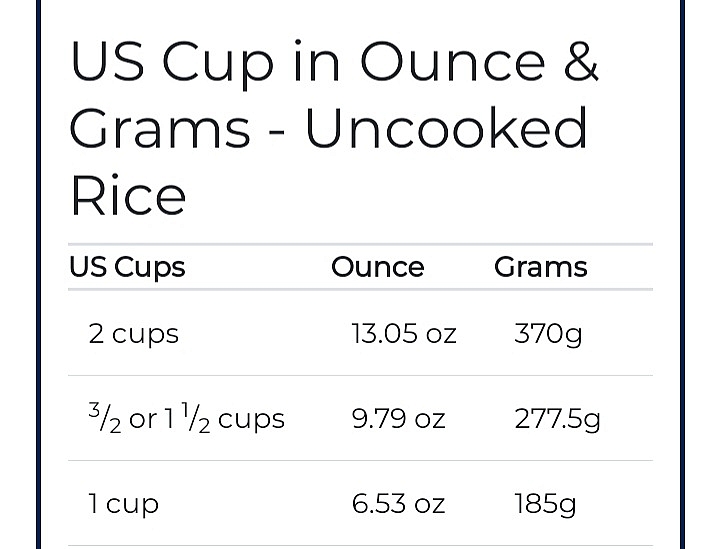 |
When we talk about measuring dry ingredients, such as a cup of flour, we are talking about volume, or how much space that flour takes up. We are not talking about weight, as we would be with grams or ounces.
1 US cup of cooked rice weighs 8.82 ( ~ 8 3/4) ounces.
(or precisely 8.8210925057844 ounces. All values are approximate).
5. How Many Ounces in A Cup of Flour
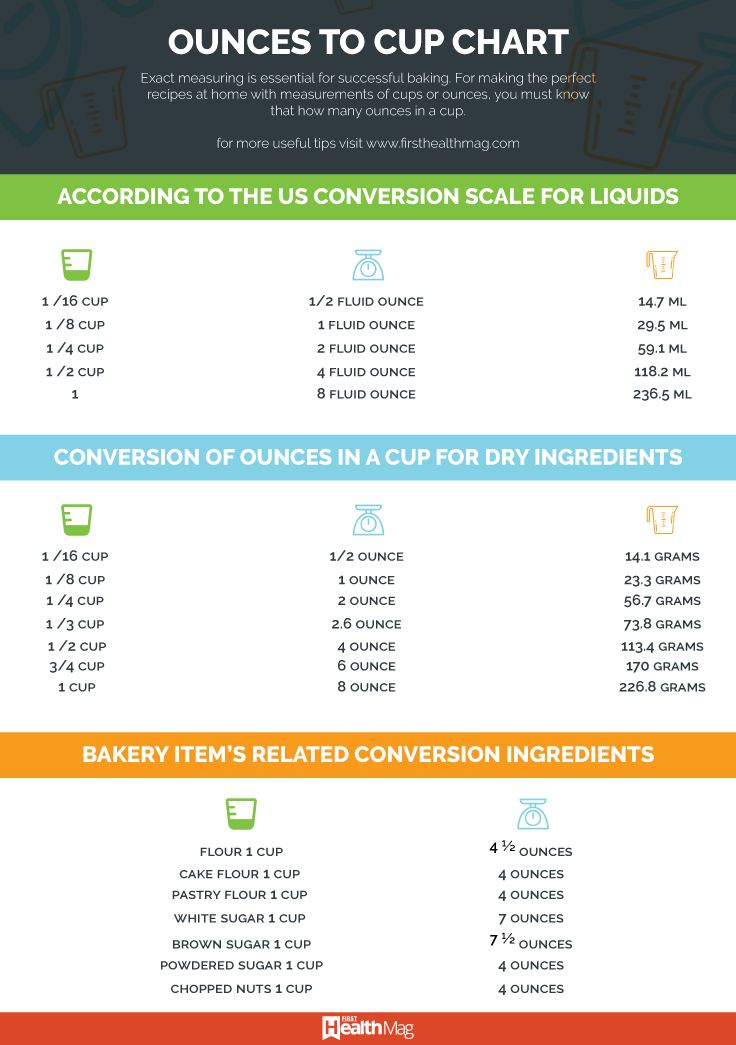 |
To convert a cup measurement to an ounce measurement, multiply the flour by the conversion ratio.
Since one cup of flour is equal to 4.409245 ounces, you can use this simple formula to convert:
ounces = cups × 4.409245
The flour in ounces is equal to the cups multiplied by 4.409245.
For example, here's how to convert 5 cups to ounces using the formula above.
5 c = (5 × 4.409245) = 22.046226 oz
While most experts suggest measuring dry ingredients by weight for improved precision,[1]not all recipes call for ingredients by weight and when they do we might not all have a scale handy. Because flours vary in density, it might not be immediately clear how to convert between a weight and volume measurement.
Here are more examples:
1 cup of fresh parsley = 1 ounce
1 cup of popcorn = 3 ounces
1 cup of flour = 4¼ ounces
1 cup of chocolate chips = 6 ounces
1 cup of shredded cheese = 3 ounces
You may find other sources with slightly different weights, which makes sense if you think about how much things like brown sugar, shredded cheese, or even flour can compact.
If a recipe ever calls for ounces of solid ingredients like cheese or chocolate, it’s better to look at the label rather than using a measuring cup. If you have an 8 ounce block of cheese, two ounces would be a quarter of the block.
6. How Many Ounces in A Cup of Beer
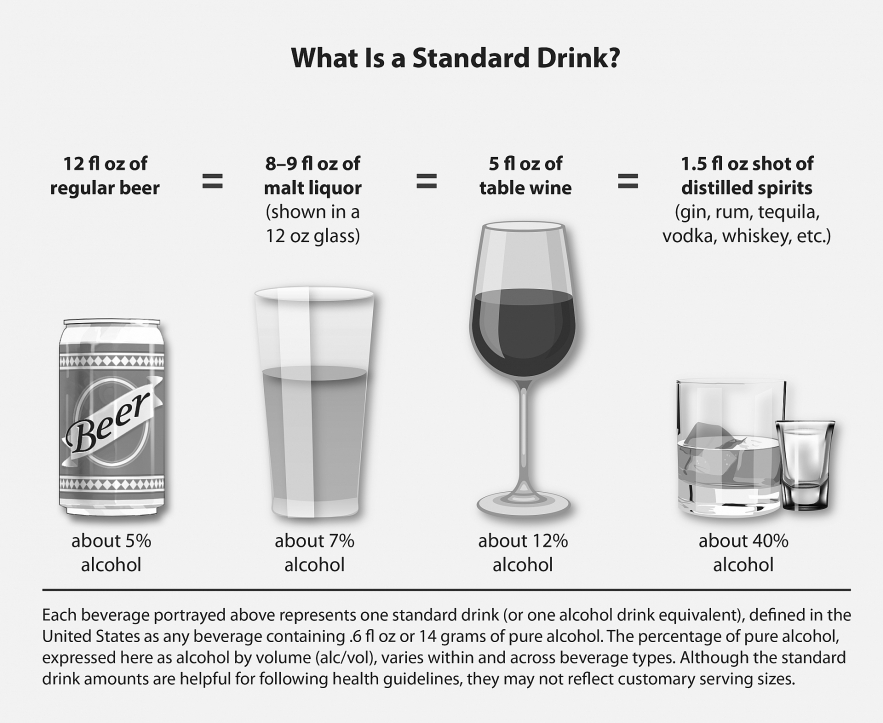 |
Liquid measuring cups indicate that 1 cup = 8 ounces.
The 16-ounce beer glass is generally acknowledged to be the universal standard for ordering the beer.
Many people are surprised to learn what counts as a drink. The amount of liquid in your glass, can, or bottle does not necessarily match up to how much alcohol is actually in your drink. Different types of beer, wine, or malt liquor can have very different amounts of alcohol content. For example, many light beers have almost as much alcohol as regular beer – about 85% as much. Here’s another way to put it:
Regular beer: 5% alcohol content
Some light beers: 4.2% alcohol content
That’s why it’s important to know how much alcohol your drink contains. In the United States, one "standard" drink (or one alcoholic drink equivalent) contains roughly 14 grams of pure alcohol, which is found in:
12 ounces of regular beer, which is usually about 5% alcohol
5 ounces of wine, which is typically about 12% alcohol
1.5 ounces of distilled spirits, which is about 40% alcohol
How do you know how much alcohol is in your drink?
Each beverage portrayed above represents one standard drink (or one alcoholic drink equivalent), defined in the United States as any beverage containing 0.6 fl oz or 14 grams of pure alcohol. The percentage of pure alcohol, expressed here as alcohol by volume (alc/vol), varies within and across beverage types. Although the standard drink amounts are helpful for following health guidelines, they may not reflect customary serving sizes.
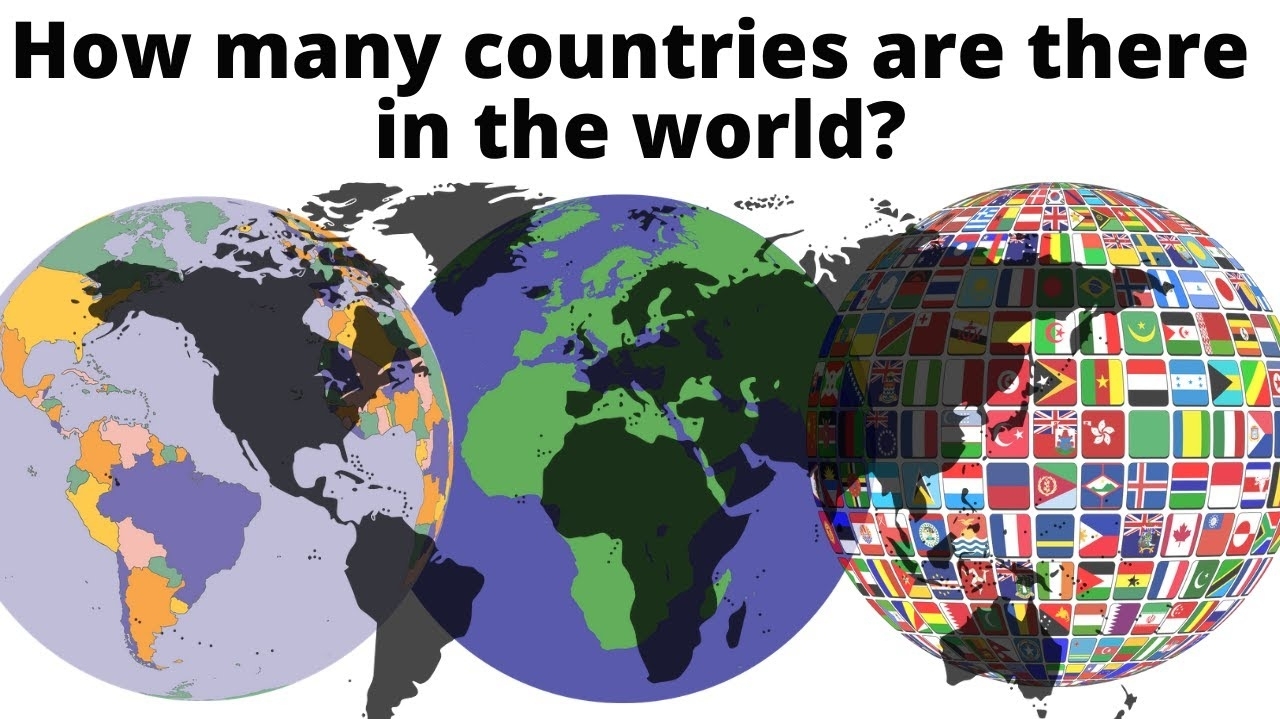 How Many Countries Are There In the World (Updated) and What is A Nation How Many Countries Are There In the World (Updated) and What is A Nation How many countries are there in the world? What is a Nation? It’s likely a simple question. But like so many things in geopolitics, ... |
 Ways to make Dalgona Coffee - Korean Style 2021- with sugar or honey Ways to make Dalgona Coffee - Korean Style 2021- with sugar or honey Dalgona coffee has become one of the trendy Korean drinks since June 2020 as its catching colour it brings to the drinkers. Today, Knowinsiders would ... |
 Top 9 Famous Coffee Brands In the World Top 9 Famous Coffee Brands In the World Coffee is a famous drink that is rich with caffeine and produced from the plant seeds of the tropical tree. Here is a rundown of ... |


